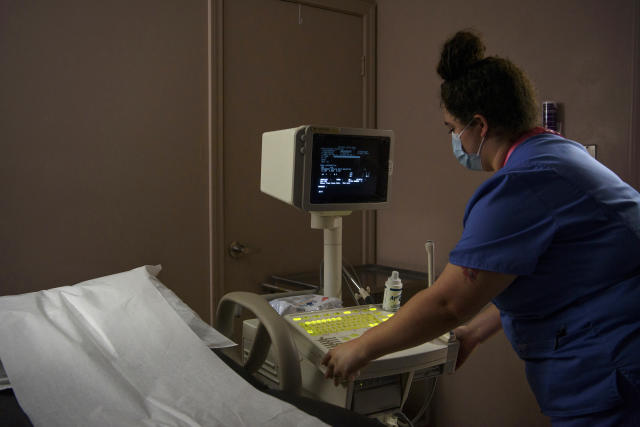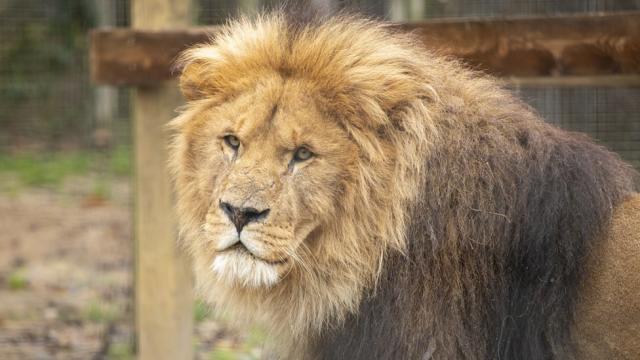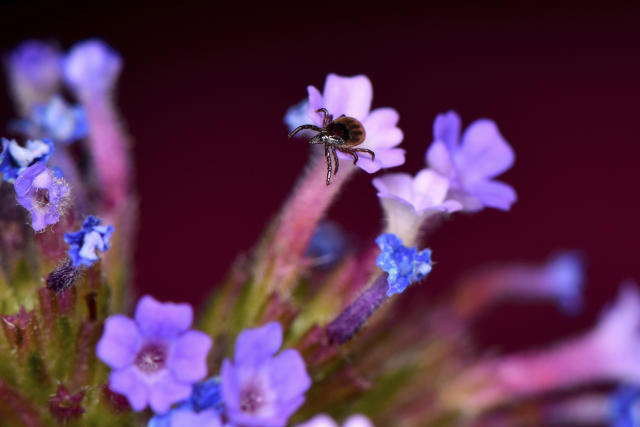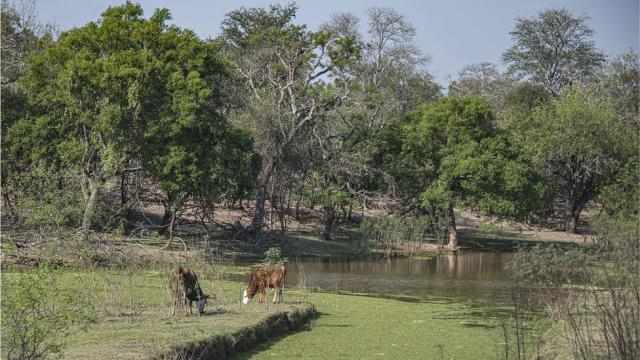Science Daily News | 02 Jul 2023

Views (107)

Paignton Zoo celebrates 100th anniversary
An animal park in Devon marks its centenary with the opening of a new display.

Paignton Zoo is marking its 100th birthday with the opening of a new display.
The zoo, in Devon, opened for the first time in July 1923 as Torbay Zoological Gardens before it was renamed.
The anniversary is being celebrated on Saturday and Sunday with a variety of family-friendly activities - including storytelling sessions and animal talks.
A spokesperson for the zoo said a new display would be unveiled at 11:00 BST on Saturday to mark the centenary.
The display looks at the history of the zoo and how it has transformed over the years.
The zoo was founded by Herbert Whitley who kept a large private collection of plants and animals before opening his doors to the public.
"Whitley passed away in 1955 and since then Paignton Zoo has continued to develop and evolve into the site that it is today with a renewed mission to educate, inspire and conserve endangered species," the zoo said.
"During the past 100 years Paignton Zoo has seen significant change and yet its initial purpose to educate its visitors remains just as true today as it did back in 1923."
Hungry ticks can use this static trick to land on you and your pets
Hungry ticks have some slick tricks. Humans and animals naturally pick up static charges as they go about their days. While the distance is tiny, “it’s the equivalent of us jumping three or four flights of stairs in one go,” said study author Sam England, an ecologist now at Berlin’s Natural History Museum.

NEW YORK (AP) — Hungry ticks have some slick tricks. They can zoom through the air using static electricity to latch onto people, pets and other animals, new research shows.
While the distance is tiny, “it’s the equivalent of us jumping three or four flights of stairs in one go,” said study author Sam England, an ecologist now at Berlin’s Natural History Museum.
Ticks are “ambush predators,” explained Stephen Rich, a public health entomologist at the University of Massachusetts Amherst.
They can't jump or fly onto their hosts, he said. Instead, they hang out on a branch or a blade of grass with their legs outstretched — a behavior known as “questing” — and wait for people or animals to pass by so they can grab on and bite.
It seemed that ticks were limited to how far they could stretch on their “tippy toes,” England said. But now, scientists are learning that static charges may help expand their reach.
“They can now actually end up latching onto hosts that don’t make direct contact with them," he said.
Researchers found that when they charged up electrodes and placed them near young ticks, the creatures would whiz through the air to land on those electrodes.
A normal level of static — the charge that fur, feathers, scales or clothes pick up with movement — could pull the critters across gaps of a fraction of an inch (a few millimeters or centimeters), according to the study. While those distances may seem small to us, for a tiny tick, they represent a big leap, England said.
In the future, there might be ways developed to reduce that static, experts said. But for now, Rich said people should keep using classic tick prevention measures, including repellents, to keep themselves safe from bites.
___
The Associated Press Health and Science Department receives support from the Howard Hughes Medical Institute’s Science and Educational Media Group. The AP is solely responsible for all content.
Sex life of rare 'leopard-print' frog revealed
Conservationists tracked it down amid deadly snakes and 50C heat in a forest known as 'hell on Earth'.

Scientists have braved 50C heat and poisonous snakes to track down a "leopard-print" frog virtually unknown to science and learn how it reproduces.
Argentinian conservation scientists are fighting to protect the tiny Santa Fe frog, which is under threat as its habitat in one of the world's driest forests, the Dry Chaco, is cut down.
The all-female team found it hides in caves, exiting only to call for a mate.
And for the first time they found tadpoles of the species.
"It's not been an easy journey so far, but we're determined to do what we can to secure the future for this wonderful amphibian," said Isis Ibañez, who leads the Santa Fe frog project, based in Buenos Aires.
The Santa Fe frog (Leptodactylus laticeps) is largely unknown to science despite being discovered more than a century ago.
Found only in Argentina, Bolivia and Paraguay, the frog is now rare due to the loss of the tropical dry forests in which it lives.
The researchers set up camera traps to locate the brightly-coloured frogs and study their behaviour.
Most frogs attract a mate by calling loudly from a pond, stream or swamp, but this species lives underground.
The team found the males emerged at nightfall to advertise their presence, then hopped back down their burrows with interested females.
After digging for hours at night they eventually found evidence of eggs and tadpoles for the first time.
Investigating the frog's breeding behaviour is the first step towards protecting it in the wild.
By drawing attention to the plight of the frog the conservation scientists hope to highlight the biodiversity of the Dry (or Grand) Chaco - and other animals at risk of extinction.
"This species is a clear example of why we have to defend the forest in the Dry Chaco," said team member, Camila Deutsch. "We don't have much time."
The scientists are also liaising with local community leaders, hunters and farmers to learn more about the frog and how to better protect it.
The Grand Chaco is a large expanse of forest and dusty plains straddling parts of Bolivia, Argentina and Paraguay.
The Chaco woodlands have been gradually cleared over the past few decades to make way for cropland and ranches.
The area has been dubbed "El Impenetrable" and even "hell on Earth" for its inaccessibility and extreme temperatures. Temperatures can reach 50C in the daytime and there is very little rainfall.
Yet wildlife thrives in the harsh conditions, including hundreds of different birds, mammals, reptiles and amphibians.
"It's a dry forest with an incredible biodiversity," said Gabriela Agostini.
Amphibians are at high risk of extinction. A pathogenic fungus has been ravaging populations around the world for about 40 years.
The animals are also under pressure from habitat loss and hunting.
The Santa Fe frog project is supported by the Conservation Leadership Programme (CLP) - an initiative run by Fauna & Flora, BirdLife International and the Wildlife Conservation Society.
European telescope launched to hunt for clues to universe's darkest secrets
A European space telescope blasted off Saturday on a quest to explore the mysterious and invisible realm known as the dark universe. SpaceX launched the European Space Agency’s Euclid observatory toward its ultimate destination 1 million miles (1.5 million kilometers) away, the Webb Space Telescope’s neighborhood. Flight controllers in Germany declared success nearly an hour into the flight, applauding and shouting “Yes!” as the telescope phoned home after a smooth liftoff.

CAPE CANAVERAL, Fla. (AP) — A European space telescope blasted off Saturday on a quest to explore the mysterious and invisible realm known as the dark universe.
SpaceX launched the European Space Agency’s Euclid observatory toward its ultimate destination 1 million miles (1.5 million kilometers) away, the Webb Space Telescope’s neighborhood. It will take a month to get there and another two months before it starts its ambitious six-year survey this fall.
Flight controllers in Germany declared success nearly an hour into the flight, applauding and shouting “Yes!” as the telescope phoned home after a smooth liftoff.
“I’m so thrilled, I’m so excited to see now this mission up in space, knowing it is on its way,” the European Space Agency’s director general, Josef Aschbacher, said from the Florida launch site.
Named for antiquity's Greek mathematician, Euclid will scour billions of galaxies covering more than one-third of the sky. By pinpointing the location and shape of galaxies up to 10 billion light-years away — almost all the way back to the cosmos-creating Big Bang — scientists hope to glean insight into the dark energy and dark matter that make up most of the universe and keep it expanding.
Scientists understand only 5 percent of the universe: stars, planets, us. The rest is “still a mystery and an enigma, a huge frontier in modern physics that we hope this mission will actually help to push forward,” the European Space Agency’s science director, Carole Mundell, said just before liftoff.
The telescope's highly anticipated 3D map of the cosmos will span both space and time in a bid to explain how the dark universe evolved and why its expansion is speeding up.
The lead scientist for the $1.5 billion mission (1.4 billion euros) said Euclid will measure dark energy and dark matter with unprecedented precision.
“It’s more than a space telescope, Euclid. It’s really a dark energy detector,” Rene Laureijs noted.
Fifteen feet (4.7 meters) tall and almost as wide, Euclid sports a 1.2-meter (4-foot) telescope and two scientific instruments capable of observing the cosmos in both visible light and the near infrared. A huge sunshield is designed to keep the sensitive systems at the properly frigid temperatures.
NASA, which contributed Euclid’s infrared detectors, has its own mission coming up to better understand dark energy and dark matter: the Roman Space Telescope due to launch in 2027. The US-European Webb telescope can also join in this quest, officials said.
Euclid was supposed to launch on a Russian rocket from French Guiana in South America, Europe’s main spaceport. The European and Russian space agencies cut ties following the invasion of Ukraine last year, and the telescope switched to a SpaceX ride from Cape Canaveral. Waiting for Europe's next-generation, yet-to-fly Ariane rocket would have meant a two-year-plus delay, according to project manager Giuseppe Racca.
___
The Associated Press Health and Science Department receives support from the Howard Hughes Medical Institute’s Science and Educational Media Group. The AP is solely responsible for all content.
Mars helicopter Ingenuity phones home, breaking 63-day silence
NASA's Mars helicopter Ingenuity has phoned home after 63 days of silence, and all appears to be well with the little rotorcraft.

The Ingenuity Mars helicopter's two-month silent stretch is over.
"The team’s goal is to keep Ingenuity ahead of Perseverance, which occasionally involves temporarily pushing beyond communication limits," Anderson added. "We're excited to be back in communications range with Ingenuity and receive confirmation of Flight 52."
Ingenuity covered 1,191 feet (363 meters) of ground on the 139-second-long Flight 52. The main goals of the sortie were to reposition the chopper and snap photos for Perseverance's science team, NASA officials said.
The newly received flight data suggest that Ingenuity remains in good health. If further checkouts confirm that, the chopper could fly again within the next few weeks, team members said.
RELATED STORIES:
All communications to and from Ingenuity must be routed through Perseverance. That explains the recent silent spell, which the two mission teams had expected: The rover had disappeared behind a hill from the helicopter's perspective, and it didn't come back into view until June 28.
Study Finds Rise in Texas Births After Abortion Law. But Questions Remain.
For more than a year, since the U.S. Supreme Court’s decision overturning Roe v. Wade, pregnant women have faced a radically altered landscape of challenges and choices as the number of abortion providers dropped to zero in more than a dozen states. But the precise impact of the decision has been difficult for researchers to measure directly, particularly when it comes to a central question: How many more babies are born as a result of abortion bans? On Thursday, researchers from Johns Hopkins U

For more than a year, since the U.S. Supreme Court’s decision overturning Roe v. Wade, pregnant women have faced a radically altered landscape of challenges and choices as the number of abortion providers dropped to zero in more than a dozen states.
But the precise impact of the decision has been difficult for researchers to measure directly, particularly when it comes to a central question: How many more babies are born as a result of abortion bans?
On Thursday, researchers from Johns Hopkins University’s Bloomberg School of Public Health published one of the first serious attempts at an answer. They focused on Texas, where a law that took effect in September 2021, nine months before the court’s Dobbs decision, effectively banned abortion at six weeks. The analysis found that the state had nearly 10,000 more births between April and December of last year than would have been expected without the law, or 3% more.
The finding, which cheered abortion opponents, could suggest a striking number of pregnancies carried to term that otherwise might not have been, absent the law known as Senate Bill 8.
Researchers watching the new abortion bans around the country have expected a resultant rise in births, but perhaps not one so large.
“It looks like they have demonstrated that births increased more in Texas than we would have expected,” said Caitlin Myers, a professor of economics at Middlebury College who studies abortion but did not participate in the study. “The inference I’m less comfortable making at this point is that all of those excess births are because of SB 8. Some of it may be, but I don’t think all of it will be. It’s just too high.”
The authors of the study, which was published as a two-page research letter in the Journal of the American Medical Association, also stopped short of attributing their estimated increase in births solely to the unusual law, which allows for lawsuits against those who aid abortions after the onset of fetal cardiac activity, usually around six weeks. The results at least suggested that “not everyone who might have received an abortion in the absence of S.B. 8 was able to obtain one,” they wrote.
Still, the authors were confident in their methods and results.
“This pattern was unique to Texas,” said Alison Gemmill, a professor at Johns Hopkins Bloomberg School of Public Health and one of the researchers on the study. She said the team looked at each of the other 49 states and Washington, D.C., but found no evidence of differences from expected birth counts. If there were other explanations for the increase, she added, they would have to be unique to Texas and to the time after the SB 8 abortion law went into effect.
Quantifying the effect of abortion bans has been difficult for researchers because of a lag in obtaining detailed data about births.
In other states where abortion bans went into force after the Dobbs decision in June 2022, researchers are still collecting vital statistics in order to study the effect of new prohibitions on births. Expectations have been that those bans would have an even greater effect on those seeking abortions than the SB 8 law did in Texas, because many of them prohibited all abortions and were adopted in a large number of contiguous states, making it difficult for women to travel to other states for procedures.
The study published on Thursday, which looked at data back to 2016, relied on provisional birth data for 2022 because fuller data was not available. It did not include demographic information such as the mother’s age or race that could be compared to prior years and used to understand other factors that may have played a role.
The researchers then created a statistical model of what Texas would have looked like without the abortion law. With that, they were able to estimate the number of births that would have taken place in that case.
“This is an indirect way of measuring what we can’t measure,” Gemmill said. “We don’t know the decisions behind whether people sought abortions, or whether they weren’t able to.”
Broader changes in birthrates have complicated researchers’ efforts. The number of births has been lower in recent years in Texas, and across the United States, a trend that was exacerbated at the height of the COVID emergency. But there has been a rise in births since the pandemic in Texas: There were around 389,000 births last year, down from 398,000 in 2016, but larger than the number recorded in 2020.
Other factors may have led to higher birth trends during that time period, Myers said, including a rise in the number of foreign-born mothers giving birth, many of them in Texas. Gemmill said that factor was hard to measure without detailed demographic data on births in 2022.
Despite the new restrictions under SB 8, many Texas women still obtained abortions, either by having them before the six-week cutoff, by traveling out of state for their procedures or by taking abortion medications on their own. Texas has seen a flood of mail-order pills, and some Texans have been able to get abortions in Mexico.
Still, anti-abortion activists took the Johns Hopkins study as evidence that their success at severely limiting abortions in Texas had produced the desired effect: more pregnancies carried to term.
“Every baby saved from elective abortion should be celebrated!” John Seago, the president of Texas Right to Life, said in a statement. “This new study highlights the significant success of our movement in the last two years, and we look forward to helping the mothers and families of our state care for their children.”
c.2023 The New York Times Company
0 Likes
